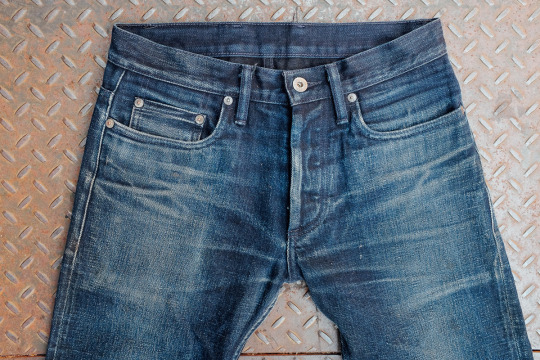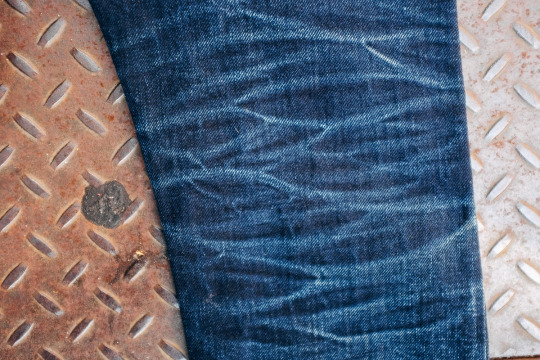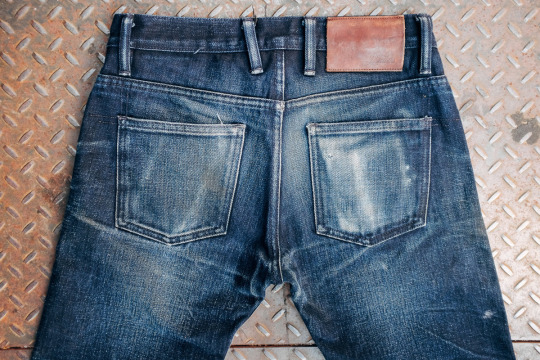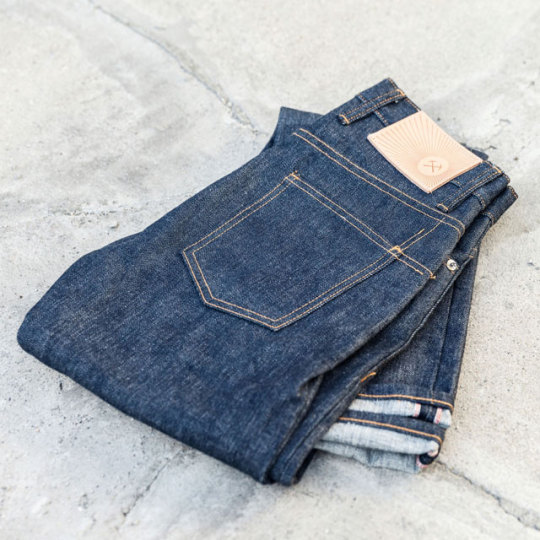
For guys who follow denim boards, 3sixteen’s Kibata jeans might be the most anticipated release of the year. They were actually supposed to come out in late-2014, but with delays at the mill and a dock strike in Long Beach, they finally just hit stores last month.
Kibata is Japanese for unsanforized, which means customers can now get a fuller, end-to-end experience with 3sixteen’s jeans. That includes being able to customize the fit at home through various warm soaks, and appreciating more of the denim’s natural character. Sanforization, for those unfamiliar, is a process whereby a manufacturer takes all the shrinkage out of denim. In doing so, however, they also tend to flatten the fibers, which means you get something that’s a bit smoother and more uniform. Unsanforized denim, therefore, is the denim’s state as it comes off the loom, which gives you the ability to appreciate the subtle nuances in the fabric before they’ve been pressed out.

These Kibata jeans aren’t just an unsanforized version of 3sixteen’s 100x denim, however. The weft yarns have been slightly modified and the weave has been executed at a much lower tension. As a result, you get a fabric that’s a bit rougher and crunchier in the hand. You can see the difference above, where the current run of 100x denim have been placed below the new Kibata offering. The jeans on top are a bit closer to what you’d find on vintage jeans, before looms had the technology to weave things so smoothly and uniformly – like you’d find off-the-shelf at most high-street stores.
With more irregularities in the weave, you’ll get something that will age a bit differently than other jeans on the market (these Kibata jeans are considerably more textured than my unsanforized Stevenson Santa Rosas, or even Flat Head 3009s). The high parts will abrade more quickly, while the recessed bits will stay dark. As a result, you’ll still see a faded jean from afar, but up close, you’ll notice bits of blue popping out here and there.

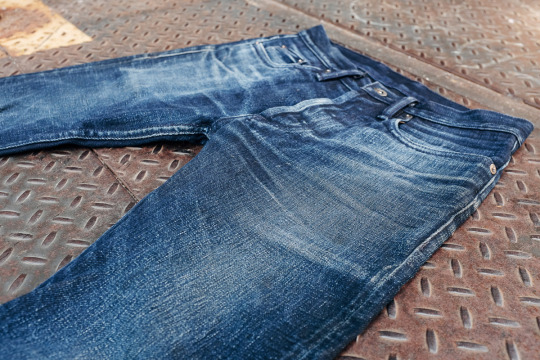
Although not an ideal comparison, here’s an example. The center jean in the top photo is a five year-old pair of SL-100x, made from an old run of Kaihara denim. It’s a stock fabric – raw and sanforized – which is no longer used today (the company has since moved on to a custom-run of denim they get from Kurorki, which is a different Japanese mill). You can see how it compares, however, to the four month-old pair of Kibata jeans in the second photo, which is a lot more textured. Both are great – and I still count those SL-100x as among my favorites – but it’s clear that the new Kibata denim has a lot more character.
You can find the new Kibata line at Self Edge. When buying, be sure to go a size up (so if you normally take a 30 in 3sixteen’s 100x jeans, grab a 31). Then, before wearing, you’ll want to take the shrinkage out by giving your jeans a warm soak. Just throw them in a bathtub for about thirty minutes (contrary to what you may have heard, you don’t need to be in them). You can shrink them down further with additional warm soaks, but it’s best to approach this through a step-wise process – lest you end up looking like Kramer.
Then just beat them to hell. Or in my case, wear them for hours while typing on the computer, and occasionally use your lap to wipe Cheeto dust off your fingers (this is where the added texture really comes handy).
